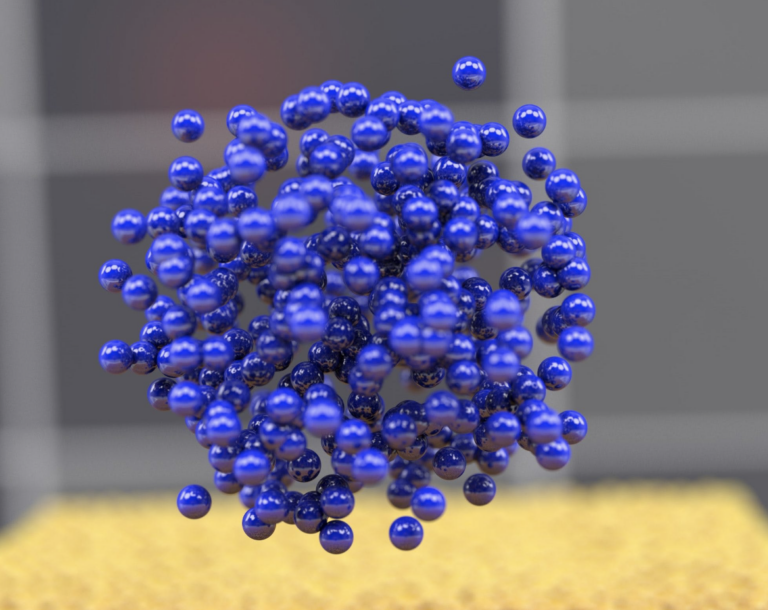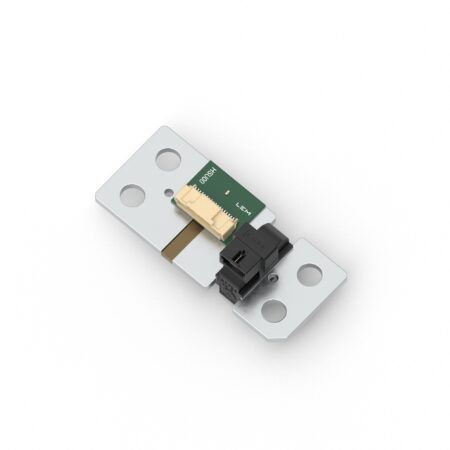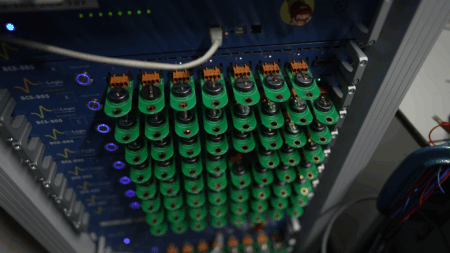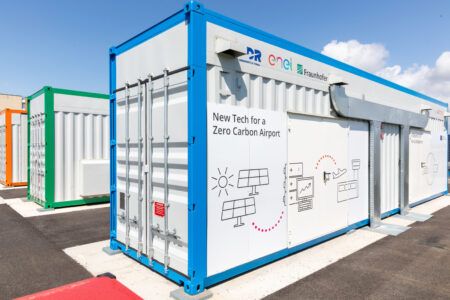New discoveries in lithium have given scientists at the Idaho National Laboratory insight into how to improve battery charging behavior.
While under a slow, low-energy charge, they observed lithium form a “glassy” surface during the early-formation of atoms depositing on electrodes. Normally the lithium deposit’s more structured surface decreases a battery’s ability to recharge over time, but this new form of metal should increase battery performance
Materials scientists scrutinizing the first few moments of battery recharging encountered an astonishing entity. Their discovery defied expectations, logic and experience. More importantly, it may open the door to better batteries, faster catalysts and other materials science leaps.
Scientists from Idaho National Laboratory and University of California San Diego investigated the earliest stages of lithium recharging at the atomic level. To their surprise, they learned that slow, low-energy charging caused lithium atoms to deposit on electrodes in a disorganized way that improves charging behavior. This noncrystalline “glassy” lithium had never been observed, and creating such amorphous metals has traditionally been extremely difficult.
The findings suggest strategies for fine-tuning recharging approaches to boost battery life and—intriguingly—for making glassy metals for other applications. The study appeared online this week in Nature Materials.
Lithium metal is considered an ideal anode for high-energy rechargeable batteries, which must be lightweight yet store a lot of energy. Recharging such batteries involves depositing lithium atoms onto the anode surface, a process that is not well understood at the atomic level.
Scientists know that lithium metal anodes can recharge erratically and, as a result, cannot withstand many recharging cycles. The way lithium atoms deposit onto the anode can vary from one recharge cycle to the next, likely influenced by the earliest congregation of the first few atoms, a process known as nucleation.
“That initial nucleation may affect your battery performance, safety and reliability,” said Gorakh Pawar, an INL staff scientist and one of the paper’s two lead authors. “It is critical to comprehend the underlying mechanism of lithium deposition…especially in the very early stage of nucleation,” they wrote.
To discover how lithium atoms first come together during recharging, the researchers combined images and analyses from a powerful electron microscope with liquid-nitrogen cooling and computer modeling. The pioneering cryo-state electron microscopy approach allowed them to see the creation of lithium metal “embryos,” and the computer simulations helped explain what they saw.
Lithium, like other metals, typically exists in a structured crystalline phase. Such “grainy” lithium can lead to inconsistent recharging and shorts because crystals can grow in various shapes, Pawar said. Inconsistent lithium growth progression from one recharge cycle to another results in irregular shapes (aka dendrites) and can shorten battery life.
When the research team sought to understand the initial nucleation process, they were surprised to learn that certain conditions created a less structured form of lithium that was amorphous (like glass) rather than crystalline (like diamond).
“The power of cryogenic imaging to discover new phenomena in materials science is showcased in this work,” said Shirley Meng, who led UC San Diego’s pioneering cryo-microscopy work. She said the imaging and spectroscopic data obtained are often convoluted and complicated, noting, “It is true teamwork that enabled us to interpret the experimental data with confidence because the computational modeling helped decipher the complexity.”
The finding came as a shock because pure amorphous elemental metals had never been observed before. They are extremely difficult to produce, and only a few metal mixtures (alloys) have been observed with a “glassy” configuration, which imparts powerful material properties.
“Compared to crystalline lithium, glassy lithium outperforms in electrochemical reversibility and is a desired structure for high-energy rechargeable batteries,” the authors wrote.
What’s more, the team learned that a glassy lithium embryo is more likely to retain its amorphous structure throughout growth. As the researchers worked to understand what conditions favored glassy nucleation, they were shocked again.
“We can make amorphous metal in very mild conditions at a very slow charging rate,” said Boryann Liaw, an INL directorate fellow and INL lead on the work. “It’s quite surprising.”
That outcome was counterintuitive because it was thought that slow deposition rates would allow the atoms to find their way into an ordered array — grainy lithium. To find glassy lithium under such conditions was considered unthinkable, Liaw said. Modeling work explained how reaction kinetics compete with crystallization to drive the glassy formation. The team confirmed those findings by creating glassy forms of four more reactive metals that are attractive for battery applications.
The research suggests how to better achieve glassy lithium deposits during recharging of high-energy batteries. When applied, the result could help meet the goals of the Battery500 consortium, a Department of Energy initiative that funded the research. The consortium aims to develop commercially viable electric vehicle batteries with a cell level specific energy of 500 Wh/kg.
“The real innovation has to come from very basic scientific understanding of any materials or processes,” Liaw said. Plus, this new understanding could lead to more effective metal catalysts, stronger metal coatings and other applications that could benefit from glassy metals.
